Director Brett Eichenberger and DP Michael Ferry used Blackmagic Design to bring to life their latest film, “A Flash of Beauty: Bigfoot Revealed.” It was shot with a combination of Pocket Cinema Camera 6K Pro, Pocket Cinema Camera 4K and URSA Mini Pro 4.6K cameras in Blackmagic RAW, and then edited and graded using DaVinci Resolve.
They recently spoke with us about working with Blackmagic and bringing the film to life. The film was released at the end of May.
Brett Eichenberger— Director, Editor
Brett Eichenberger is an award-winning filmmaker with over twenty-five years of experience working in the film and video production industry. His work includes the feature films Light of Mine and Pretty Broken, commercials, short films, music videos, and documentary shorts. Brett’s work has been featured on A&E, Discovery Channel, ABC Australia, PBS, as well as other prominent international networks. Filmmaking has taken Brett around the world, but he feels most at home in the outdoors of the Pacific Northwest. As a native Oregonian, Brett’s been intrigued by Bigfoot since his childhood years, and A Flash of Beauty: Bigfoot Revealed has given him the opportunity to explore the topic in depth.
PH: Can you share a little about your background and how you got into this world of production?
Brett Eichenberger: I’ve been a filmmaker since I was a 12 year old. As a child of the 80’s I’ve always been interested in sci-fi and the paranormal. I’ve done a few narrative features, including a drama and a comedy but I’ve always wanted to do a paranormal documentary. Growing up in the Pacific Northwest and having connections to the world of Bigfoot, I saw an opportunity to bring a cinematic mindset to tell the story of this mysterious cryptid.
PH: How did you become involved with A Flash of Beauty: Bigfoot Revealed?
Brett Eichenberger: Years ago, my wife Jill and I were invited to a secret meeting of Bigfoot researchers and experiencers. We were so enamored with their stories and realized that these witnesses had also experienced a kind of trauma associated with the events. That left an impression on us and when the industry shut down due to the pandemic we thought it would be the perfect time to do this documentary on our own, we felt the genre needed a seriousness to the subject that seemed to be missing.
PH: When you're looking for your next project, what factors and influences determine which ones you say yes to?
Brett Eichenberger: Any project I’m going to be a part of needs to have something impactful to say. I feel a need to entertain and educate at the same time. Movies and TV can be such a powerful force in the world and here’s an opportunity to make the world a better place one audience member at a time.
PH: As a director, what does your pre-production process look like on a project like this?
Brett Eichenberger: Our approach to this documentary was a bit different than traditional documentaries. Since we had been nurturing this idea for years we had a really good idea of where we needed and wanted to go from the beginning. We put together an outline and identified how we could fill in the needs. Once we had our outline we started with a series of interview questions that would get us responses we hadn’t really seen in documentaries of this type. We really wanted to know more about the emotional toll witnessing something that “doesn’t exist” has on an individual. We knew it’s not just how a person reacts the moment or the day of a sighting, but how do they react in the weeks, months and years after? As it turns out, they’re no longer the person they used to be. A Bigfoot sighting changes EVERYTHING in these people’s lives and we felt that was an important point in showing that these creatures really do exist.
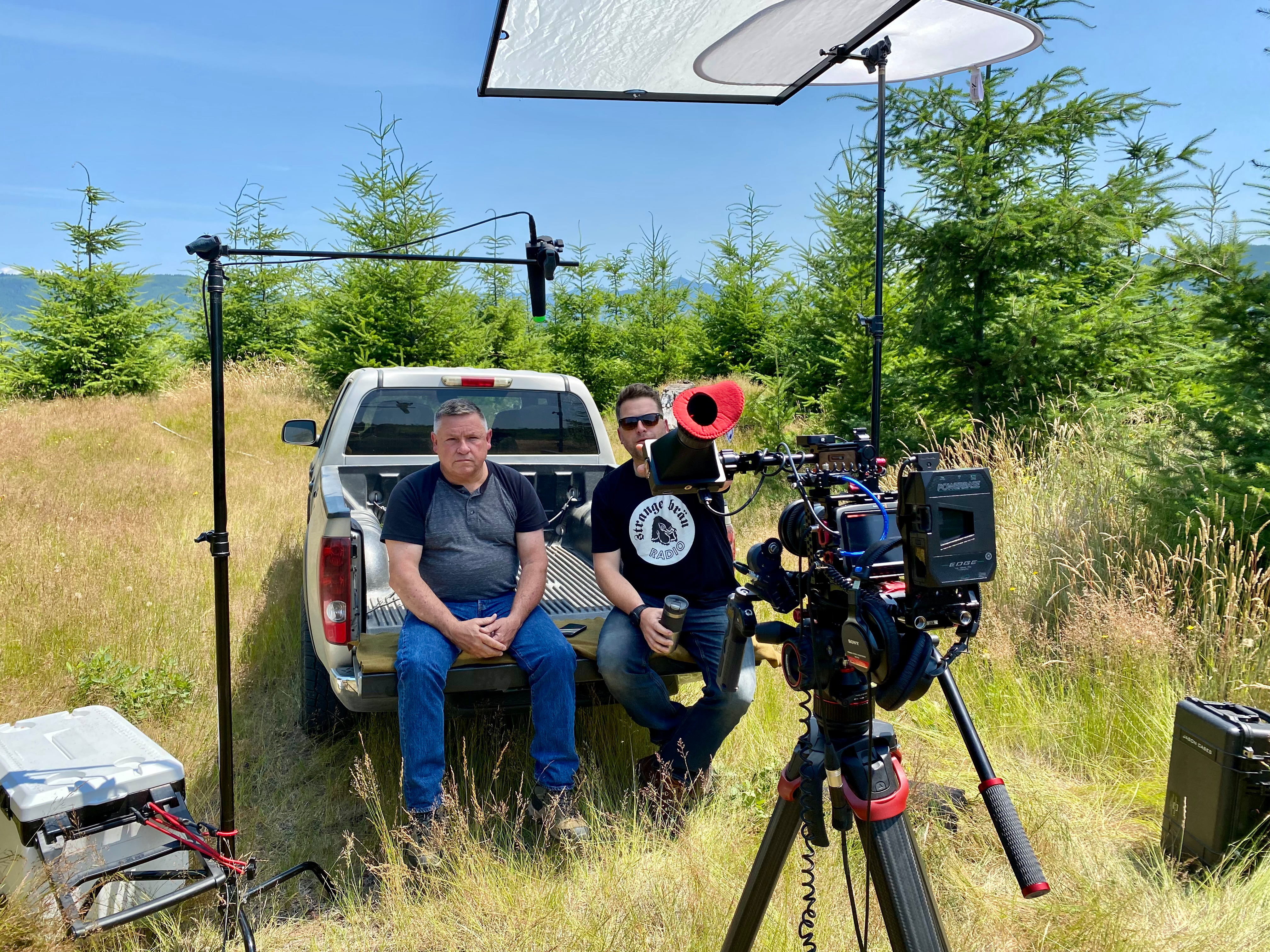
PH: Location was obviously an incredibly important part of this project. Can you talk about your equipment selection and how it helped you brave weather conditions and achieve the look and feel you wanted?
Brett Eichenberger: Michael Ferry the DP and I both immediately agreed we would shoot this project on Blackmagic Pocket Cinema Camera 6K and Pocket Cinema Camera 6K Pro cameras. We loved the versatility and small form factor which really helped us move around in difficult conditions. The last thing we needed was equipment issues while working in challenging conditions. We shot deep in forests, mountain tops and in various weather conditions many miles away from any convenience so our gear had to work! More importantly we wanted an image that looked and felt cinematic.
We shot a feature in 2016 on the URSA Mini Pro in raw, which screened in an LA theater for a week long run in 2019 and we were blown away by industry vets comparing the image to cameras costing 10X more than the URSA Mini. The Pocket Cinema Camera 6K and Pocket Cinema Camera 6K Pro also gave us so much flexibility in post being able to crop into the frame up to 40% without seeing any impact in resolution and Blackmagic RAW saved our images many times, shooting under the canopy of trees with shadows and bright highlights we were able to achieve incredible results.
PH: What challenges did you experience (and how did you navigate those)?
Brett Eichenberger: The elements were tough to be sure. We shot over the course of the year in various weather from downpours to extreme heat, wind, fog and cold. Overall we were extremely lucky and well prepared (it helps being native Oregonians) before venturing out into the woods. We always had a back up plan and were ready for almost anything, bears included.
PH: What was your experience like working alongside Michael? What did that collaboration look like?
Brett Eichenberger: Michael and I go back almost 20 years. Our first narrative feature together, Light of Mine was shot on the road in Oregon, Idaho and Yellowstone back in 2011 on DSLRs so we had experience with the elements going way back. Michael was unable to make it to a few of the interviews so we would Facetime as I would set up and frame the shot. Overall, it's such a great experience working together because we can finish each other’s sentences. Trust really goes a long way.
PH: You didn't have a sound recordist on location, but you were still able to achieve beautiful sound. Can you share what that process looked like?
Brett Eichenberger: There were definitely moments where we could’ve used a sound recordist for sure, but I felt really comfortable running sound. Being a videographer for over 25 years I’ve always done my own sound on smaller projects and I really truly value great sound. I think its imperative on a project like this. We used a Sennheiser MKH 416 and Rode Wireless 2 Go mics with Countryman lavs on everything. I’m really happy with how the sound turned out.
PH: How do you continue to evolve as a professional? What are some of the best pieces of advice you've heard from others in the industry?
Brett Eichenberger: In order to evolve in this business you can never be complacent. Good is the enemy of great. You’ve got to stay on your toes and be willing to get out of your comfort zone in order to progress. I think the best piece of advice I’ve heard is to always stay true to the story. In my experience staying true to the story means listening to your heart. You’ll be tempted to go different directions, but your heart will lead you where you need to go.
PH: Are there any other projects you're working on? (That you can share?)
Brett Eichenberger: We are working on a number of different projects including a sequel to A Flash of Beauty: Bigfoot Revealed titled A Flash of Beauty: Paranormal Bigfoot. As it turns out the rabbit hole we put our big toe in has a deep end and we’re currently falling down it now! We also have a few narrative projects in the works as well, but I can’t really talk about those just yet!
Michael Ferry - Cinematographer
Michael Ferry’s cinematography skills have taken him worldwide. He’s filmed on-location for the Alaska Airlines travel program Next Stop, which featured travel destinations throughout the US and Canada, Mexico, Brazil, Iceland, Japan, Denmark, Tahiti, Germany and Australia. His background in journalism has aided him in telling visually compelling stories about people and places the world over. As the principle Director of Photography for Resonance, he’s been responsible for the visual storytelling of two feature films and a variety of commercial and corporate projects. Michael’s knowledge and ability to work under almost any condition has made him a go-to collaborator for many producers.
PH: Can you share a little about your background and how you got into this world of production?
Michael Ferry: I’ve always wanted to be a filmmaker and quickly discovered that I wanted to tell stories visually and make my mark behind the camera. I’ve always been interested in documentary filmmaking and was lucky enough to focus on documentary study within the journalism school at the University of Oregon. After graduation and a few internships I met Brett and Jill while working for a production company in Portland, OR. We worked together for a number of years before we all went our own ways, but we always came back to the same team on various projects once Brett and Jill started Resonance Productions.
PH: How did you become involved with A Flash of Beauty: Bigfoot Revealed?
Michael Ferry: We were all home taking some time away from filmmaking as many filmmakers were doing at the start of the pandemic and we were looking for some sort of creative outlet. Brett and Jill and myself are very interested in the Bigfoot mystery, and we’re lucky enough to live in the pacific northwest. We all grew up with tales of the hairy man and we saw this lull in production as an opportunity to take jump down the rabbit hole and explore who Bigfoot is.
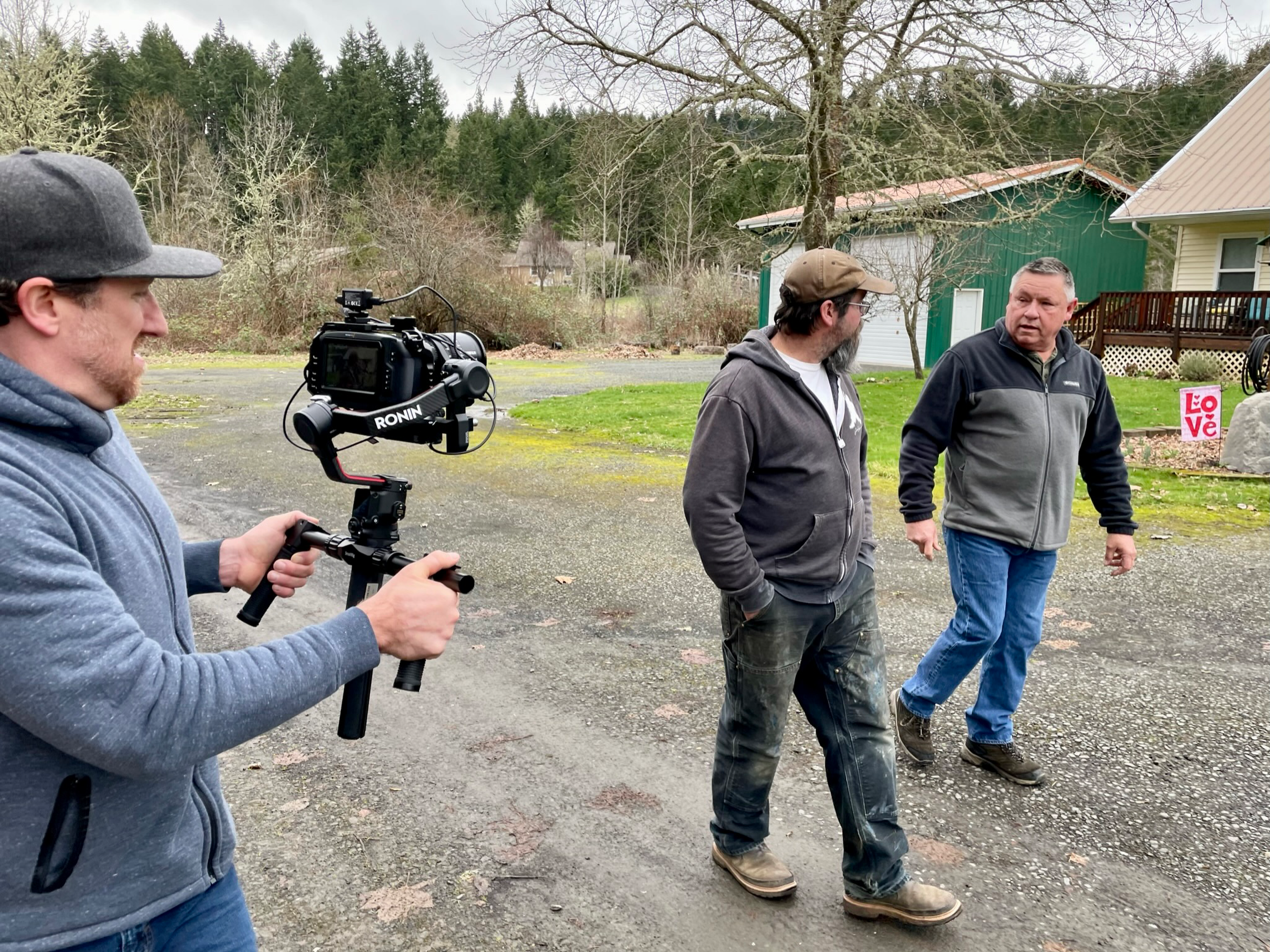
PH: As a DP, what does your pre-production process look like on a project like this? Did you already have an idea of what you wanted this documentary to look like?
Michael Ferry: We knew that we wanted this project to be unique and something very different than other projects we’ve seen in this genre. Our goal was to dive into some very personal first hand experiences of people who have had profound encounters with bigfoot. We really wanted to visually make it an intimate experience for the viewer. We chose to shoot all our interviews straight to camera so that our audience came along for the ride and really felt what is was like to see something you have been told does not exist. We wanted to make the camera work as immersive as we could to tell this story.
PH: With a story like Bigfoot, are there certain elements of nostalgia you aim to evoke?
Michael Ferry: Our team is made up of filmmakers all from the pacific northwest originally and we’ve been hearing these Bigfoot stories our whole lives. The subject lends itself to nostalgia. Bigfoot is someone we all grew up with, but in our case haven’t met. Someday we may...fingers crossed!
PH: What was your experience like working alongside Brett? What did that collaboration look like?
Michael Ferry: I’ve been working with Brett for nearly 20 years. Brett and Jill are a brother and sister to me in filmmaking. I really feel like we’ve developed a short hanad in production and a freedom to express ourselves creatively within the filmmaking process. We have been able to create a space where we can go anywhere creatively. It’s my favorite way to work, and I’m lucky I get to create with them.
PH: Location was obviously an incredibly important part of this project. Can you talk about your equipment selection and how it helped you brave weather conditions and achieve the look and feel you wanted?
Michael Ferry: We chose to shoot with Blackmagic Pocket Cinema Camera 6K and Pocket Cinema Camera 6K Pro cameras because we were already familiar with them and knew that the small form factor would allow us to shoot fast and efficiently in the demanding outdoor conditions.
PH: Can you share your experience shooting in Blackmagic RAW? What was that experience like?
Michael Ferry: Like I said..we had a ton of experience using Blackmagic on set and we knew we could get a great deal of dynamic range shooting in Blackmagic RAW. It’s a codec that we knew we could depend on in some pretty harsh conditions. In sitting in on color session for the documentary I was reminded time and time again that the decision to shoot raw was the right one.
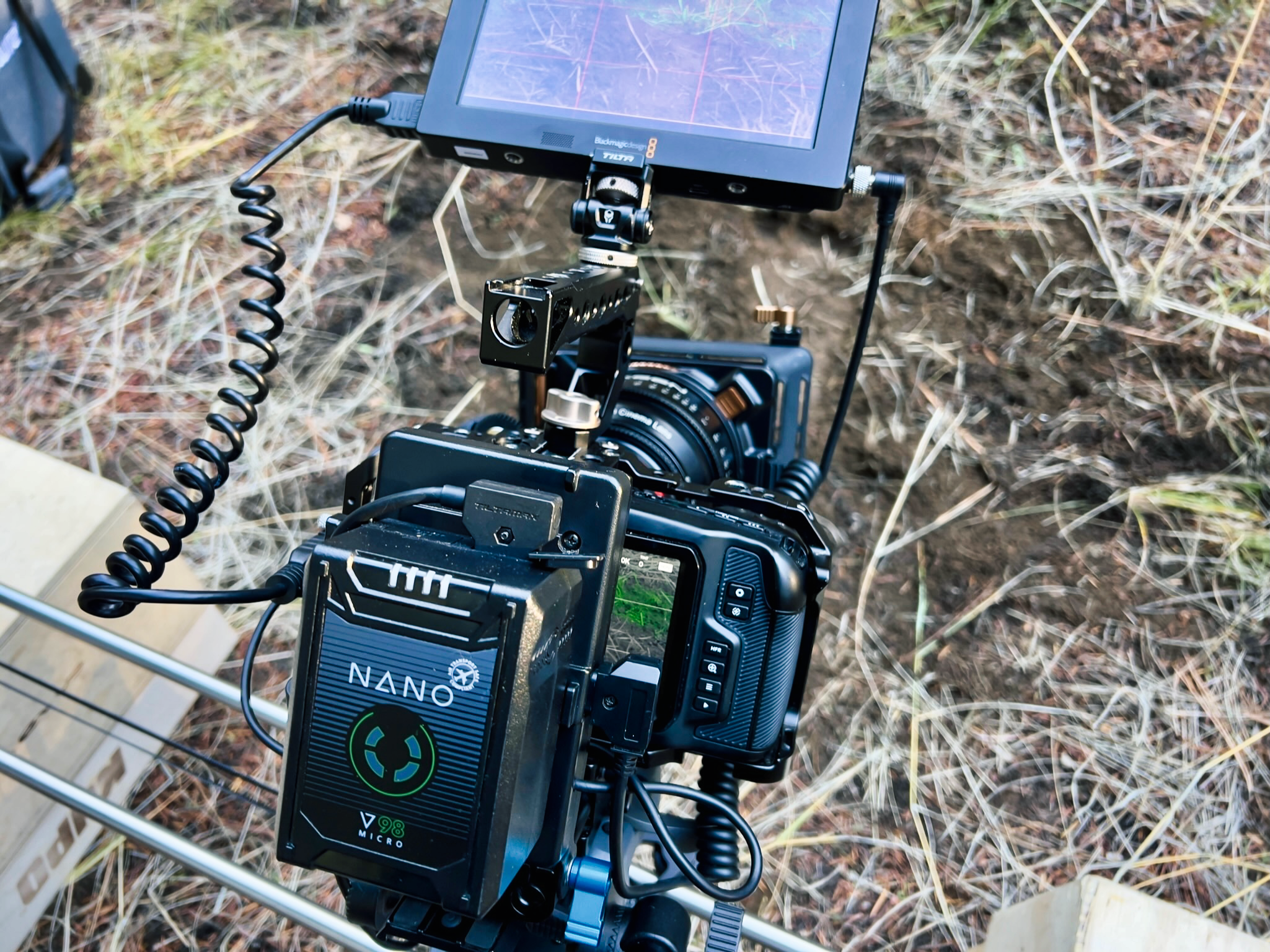
PH: How do you continue to evolve as a professional? What are some of the best pieces of advice you've heard from others in the industry?
Michael Ferry: I think just be open to throwing yourself into the unknown with your storytelling and pushing yourself every chance you get to take chances and get yourself into uncomfortable situations. Finding that motivation to tell stories and try different ways to tell those stories are things I’ll never quit doing as a filmmaker. Some of the best advice I’ve gotten from fellow filmmakers are to just keep going and never give up. It’s so easy to throw in the towel and find excuses to stop, but it’s the filmmakers that constantly flex their creative muscle are the ones that finally breakthrough and find their place as a filmmaker.
PH: Are there any other projects you're working on? (That you can share?)
Michael Ferry: Yes...there is a part two to Flash of Beauty that we are currently working on. I’m so excited about this film and I think after watching Flash of Beauty, Bigfoot Revealed you will be too.


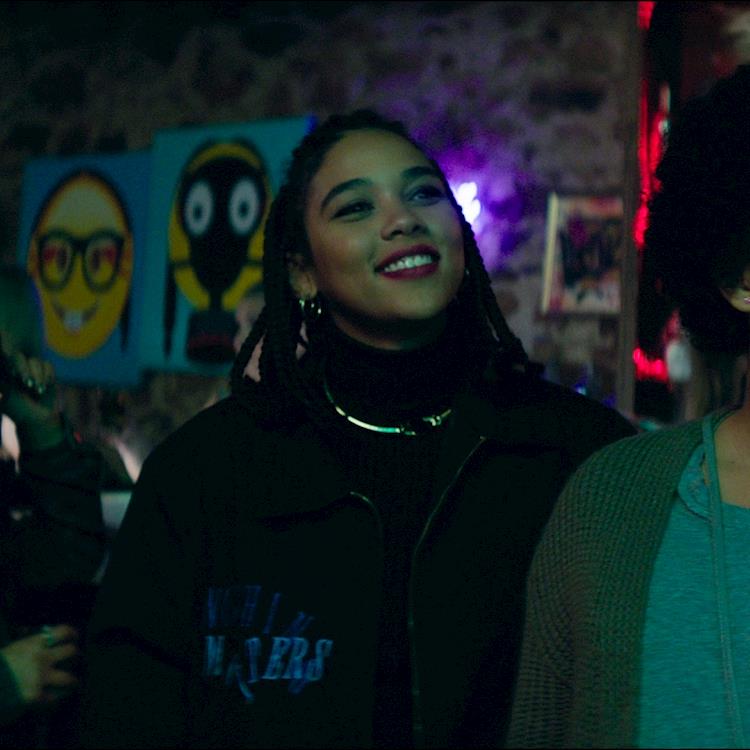
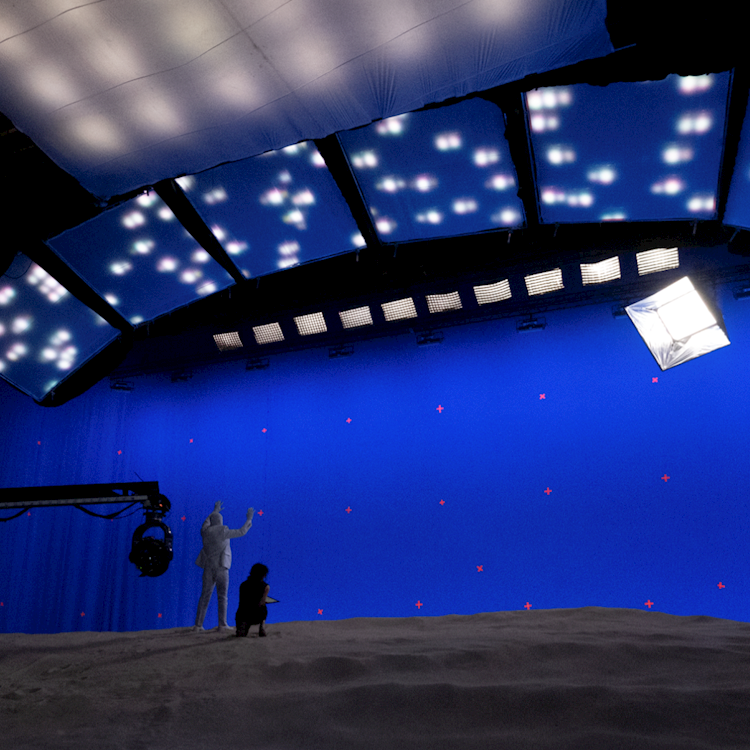
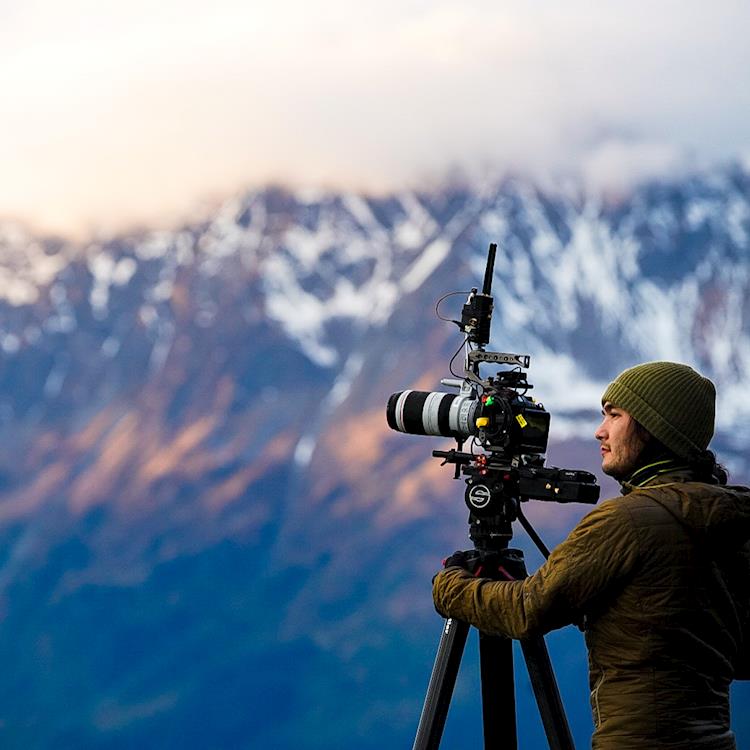
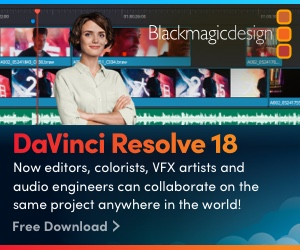
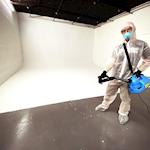
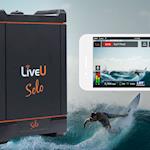
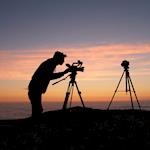

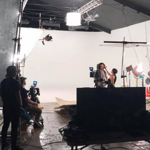

Comments
There are no comments on this blog post.